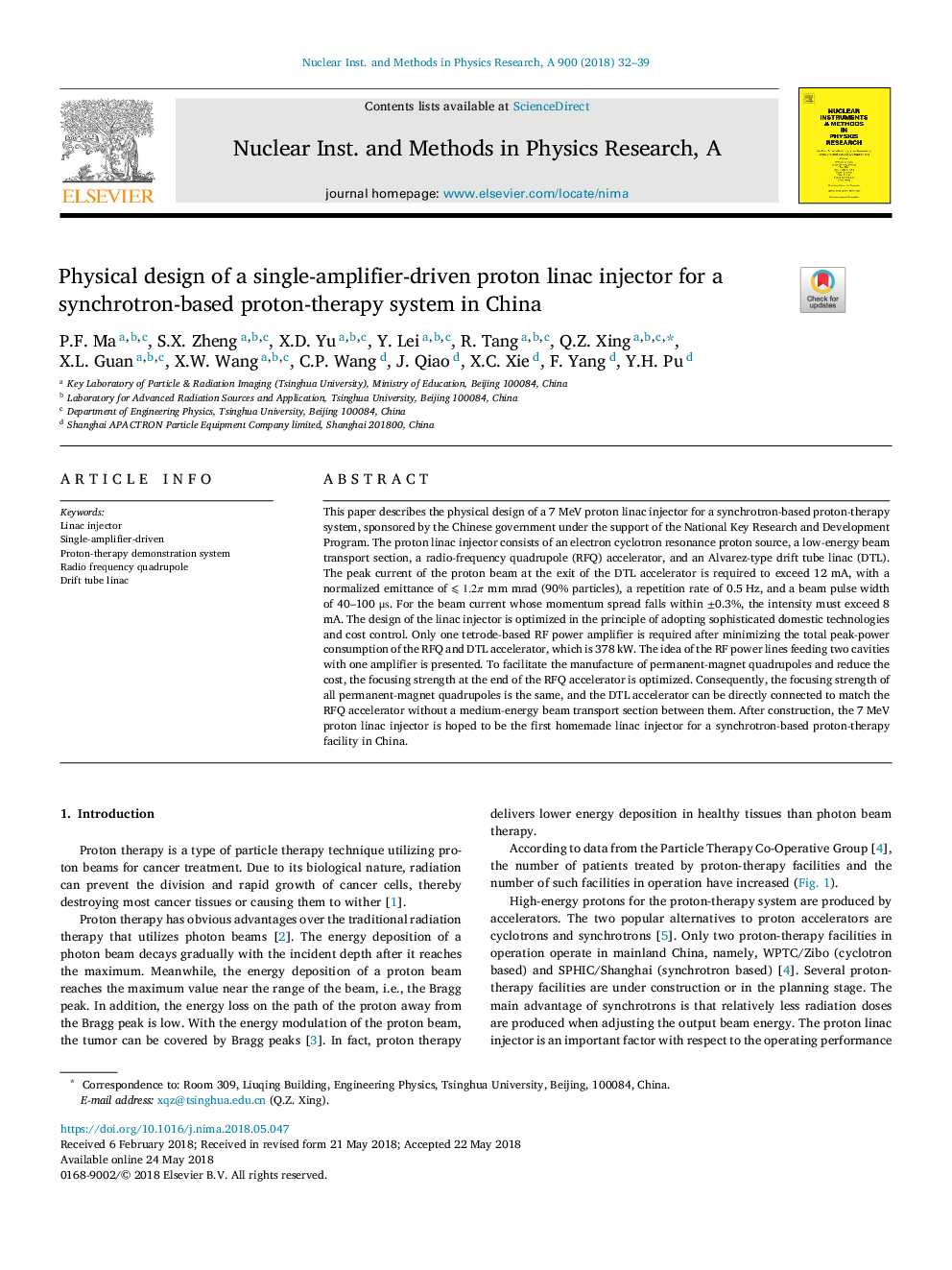| Article ID | Journal | Published Year | Pages | File Type |
|---|---|---|---|---|
| 8166049 | Nuclear Instruments and Methods in Physics Research Section A: Accelerators, Spectrometers, Detectors and Associated Equipment | 2018 | 8 Pages |
Abstract
This paper describes the physical design of a 7 MeV proton linac injector for a synchrotron-based proton-therapy system, sponsored by the Chinese government under the support of the National Key Research and Development Program. The proton linac injector consists of an electron cyclotron resonance proton source, a low-energy beam transport section, a radio-frequency quadrupole (RFQ) accelerator, and an Alvarez-type drift tube linac (DTL). The peak current of the proton beam at the exit of the DTL accelerator is required to exceed 12 mA, with a normalized emittance of ⩽1.2Ï mm mrad (90% particles), a repetition rate of 0.5 Hz, and a beam pulse width of 40-100 μs. For the beam current whose momentum spread falls within ±0.3%, the intensity must exceed 8 mA. The design of the linac injector is optimized in the principle of adopting sophisticated domestic technologies and cost control. Only one tetrode-based RF power amplifier is required after minimizing the total peak-power consumption of the RFQ and DTL accelerator, which is 378 kW. The idea of the RF power lines feeding two cavities with one amplifier is presented. To facilitate the manufacture of permanent-magnet quadrupoles and reduce the cost, the focusing strength at the end of the RFQ accelerator is optimized. Consequently, the focusing strength of all permanent-magnet quadrupoles is the same, and the DTL accelerator can be directly connected to match the RFQ accelerator without a medium-energy beam transport section between them. After construction, the 7 MeV proton linac injector is hoped to be the first homemade linac injector for a synchrotron-based proton-therapy facility in China.
Related Topics
Physical Sciences and Engineering
Physics and Astronomy
Instrumentation
Authors
P.F. Ma, S.X. Zheng, X.D. Yu, Y. Lei, R. Tang, Q.Z. Xing, X.L. Guan, X.W. Wang, C.P. Wang, J. Qiao, X.C. Xie, F. Yang, Y.H. Pu,
